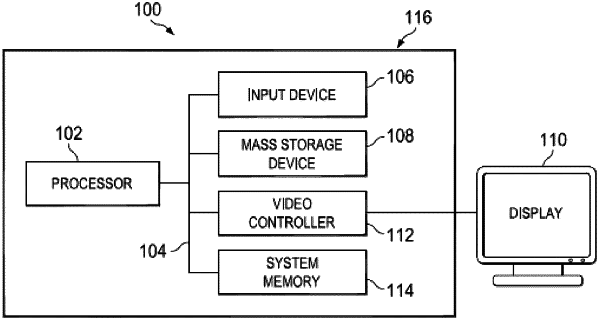| CPC G06F 1/203 (2013.01) [G05B 19/4155 (2013.01); G05B 2219/49216 (2013.01)] | 14 Claims |

|
1. A computing cooling system, comprising:
a chassis defining a chassis housing and including at least one chassis surface;
at least one heat dissipation device that is included in the chassis housing;
at least one high temperature component that is included in the chassis housing, that is coupled to the at least one heat dissipation device by at least one heat transfer device, and that is configured to generate and transfer a first amount of heat to the at least one heat dissipation device via the at least one heat transfer device;
at least one low temperature component that is included in the chassis housing, that is not coupled to the at least one heat dissipation device, and that is configured to generate a second amount of heat that is less than the first amount of heat;
at least one chassis surface temperature sensor that is configured to report a chassis surface temperature associated with the at least one chassis surface;
at least one high temperature component temperature sensor that is configured to report a high temperature component temperature associated with the at least one high temperature component;
a first fan system that is configured to generate a component cooling airflow past the at least one heat dissipation device and out of the chassis housing to dissipate the first amount of heat generated and transferred by the at least one high temperature component to the at least one heat dissipation device via the at least one heat transfer device and reduce a high temperature component temperature of the at least one high temperature component;
a second fan system that is configured to generate a chassis surface cooling airflow into the chassis housing and through airflow apertures defined by the chassis that are sized to create a positive pressure volume in the chassis housing that operates to dissipate the second amount of heat generated by the at least one low temperature component to reduce a low temperature component temperature of the at least one low temperature component, and reduce the chassis surface temperature of the at least one chassis surface; and
a fan control system that is coupled to the at least one surface temperature sensor, the at least one high temperature component temperature sensor, the first fan system, and the second fan system, wherein the fan control system is configured to:
operate, in response to receiving a first high temperature component temperature from the at least one high temperature component temperature sensor that exceeds a first high temperature component temperature threshold, the first fan system at a first operating level; and
operate, in response to receiving a second high temperature component temperature from the at least one high temperature component temperature sensor that is higher than a second high temperature component temperature threshold that is higher than the first high temperature component temperature threshold, the first fan system at a second fan operating level that is higher than the first fan operating level;
determine, in response to receiving a third high temperature component temperature from the at least one high temperature component temperature sensor that exceeds a third high temperature component temperature threshold that is higher than the second high temperature component temperature threshold, that the second fan operating level for the first fan system is a maximum fan operating level for the first fan system; and
operate, in response to receiving the third high temperature component temperature that exceeds the third high temperature component temperature threshold and determining that the first fan system is operating at the maximum fan operating level for the first fan system, the second fan system.
|